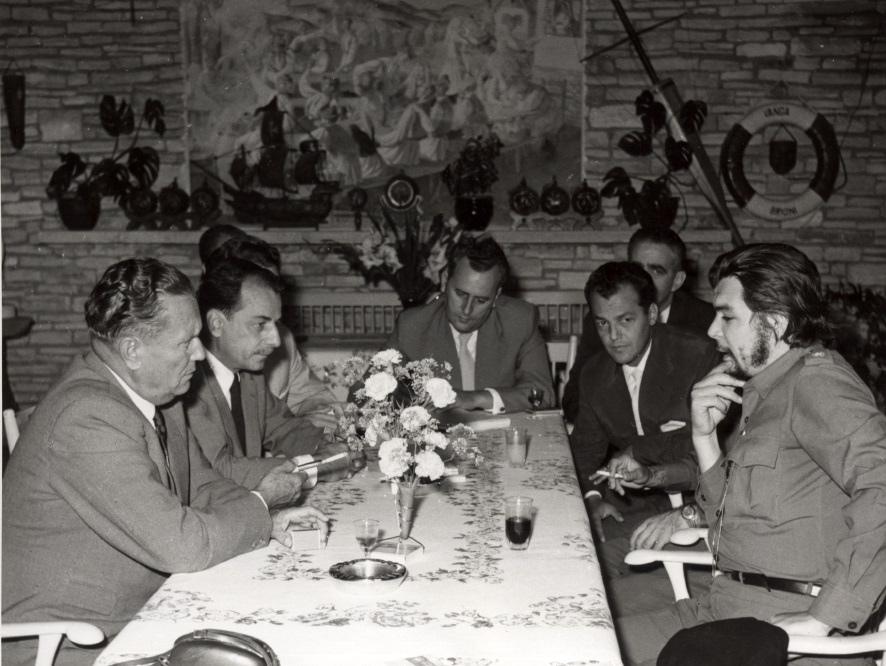Cuba–Yugoslavia Relations on:
[Wikipedia]
[Google]
[Amazon]
 Cuba–Yugoslavia relations were historical foreign relations between Cuba and now split-up Socialist Federal Republic of Yugoslavia. Official diplomatic relations were established in 1943 when the Yugoslav government-in-exile decided to upgrade its consulate into an official representation office.
During the
Cuba–Yugoslavia relations were historical foreign relations between Cuba and now split-up Socialist Federal Republic of Yugoslavia. Official diplomatic relations were established in 1943 when the Yugoslav government-in-exile decided to upgrade its consulate into an official representation office.
During the
 Cuba–Yugoslavia relations were historical foreign relations between Cuba and now split-up Socialist Federal Republic of Yugoslavia. Official diplomatic relations were established in 1943 when the Yugoslav government-in-exile decided to upgrade its consulate into an official representation office.
During the
Cuba–Yugoslavia relations were historical foreign relations between Cuba and now split-up Socialist Federal Republic of Yugoslavia. Official diplomatic relations were established in 1943 when the Yugoslav government-in-exile decided to upgrade its consulate into an official representation office.
During the Cold War
The Cold War is a term commonly used to refer to a period of geopolitical tension between the United States and the Soviet Union and their respective allies, the Western Bloc and the Eastern Bloc. The term '' cold war'' is used because the ...
both countries actively participated in the work of the Non-Aligned Movement in which they belonged to a different informal sub-groupings and often disagreed on the common policies of the movement. Cuba associated mostly with self-described ''progressive members'' which advocated for what they perceived as natural identity of interest between Soviet socialism and colonial people of Africa and Asia. Post 1948 Tito-Stalin split Yugoslavia on the other hand identified with self-described ''movement's core members'' which insisted on strict equidistance towards both blocs. Both approaches aimed to achieve strategic independence from one or the other superpower. This disagreement reached its peak at the time of the 1979 Summit in Havana.
Despite significant disagreements on the question of Soviet strategic alliance and competition for influence within the movement, both countries insisted on maintaining courteous and close relations on the level of state protocol. On his goodwill mission to Afro-Asian countries and Yugoslavia Che Guevara visited Belgrade
Belgrade ( , ;, ; Names of European cities in different languages: B, names in other languages) is the Capital city, capital and List of cities in Serbia, largest city in Serbia. It is located at the confluence of the Sava and Danube rivers a ...
, Kragujevac
Kragujevac ( sr-Cyrl, Крагујевац, ) is the fourth largest city in Serbia and the administrative centre of the Šumadija District. It is the historical centre of the geographical region of Šumadija in central Serbia, and is situated on ...
, Sarajevo, Rijeka
Rijeka ( , , ; also known as Fiume hu, Fiume, it, Fiume ; local Chakavian: ''Reka''; german: Sankt Veit am Flaum; sl, Reka) is the principal seaport and the third-largest city in Croatia (after Zagreb and Split). It is located in Primor ...
, Opatija and Brijuni islands in 1959, eight months after the Cuban revolution. Fidel Castro
Fidel Alejandro Castro Ruz (; ; 13 August 1926 – 25 November 2016) was a Cuban revolutionary and politician who was the leader of Cuba from 1959 to 2008, serving as the prime minister of Cuba from 1959 to 1976 and president from 1976 to 200 ...
visited Yugoslavia it in 1976. President of Yugoslavia Josip Broz Tito
Josip Broz ( sh-Cyrl, Јосип Броз, ; 7 May 1892 – 4 May 1980), commonly known as Tito (; sh-Cyrl, Тито, links=no, ), was a Yugoslav communist revolutionary and statesman, serving in various positions from 1943 until his deat ...
visited Havana at the time of 1979 Non-Aligned Summit which was his last international trip.
See also
* Yugoslavia and the Non-Aligned Movement * Cuba–Serbia relationsReferences
Cuba–Yugoslavia relations Yugoslavia Cuba {{bilateralrelations-stub